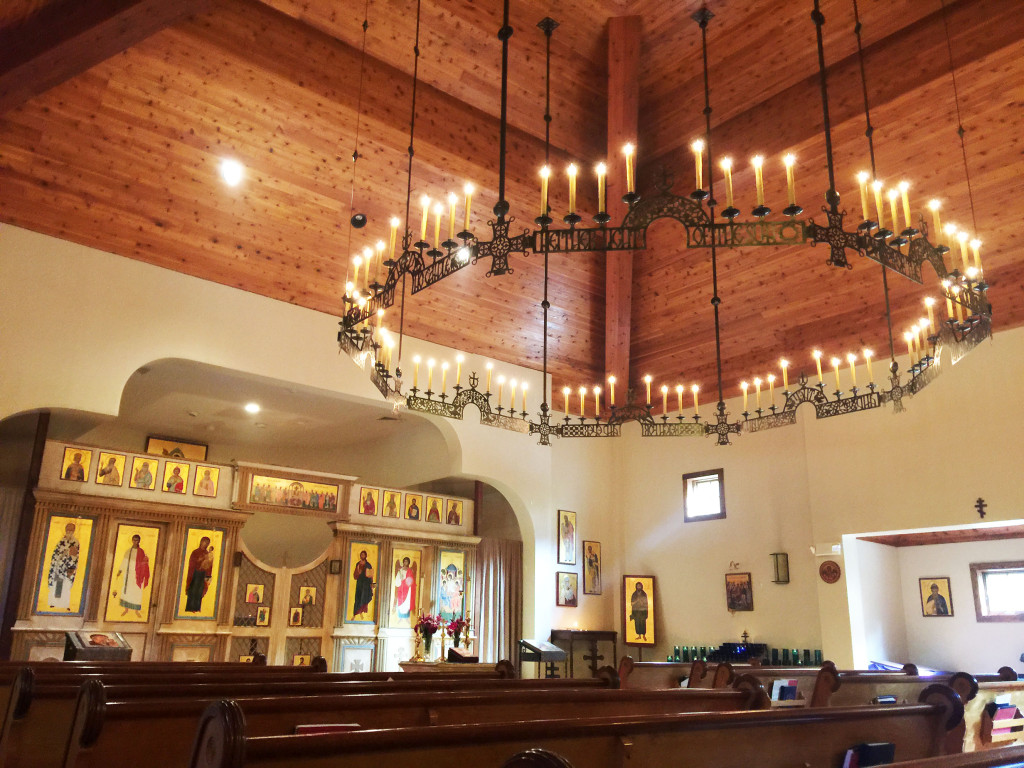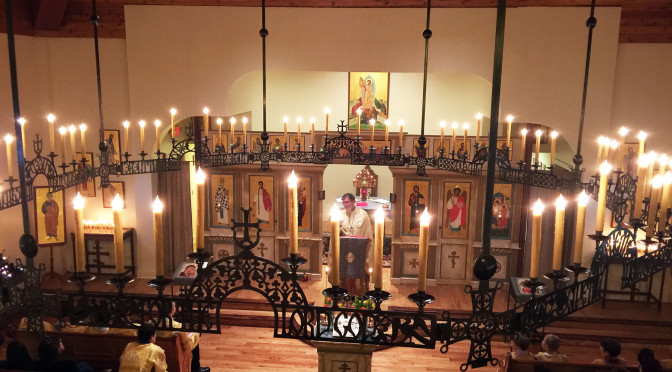On Sunday October 25th, we celebrated the blessing of our new chandelier during liturgy which has been donated in honor and memory of Max Rosenfield. The Kerpchar Family graciously hosted a wonderful dinner after the liturgy.
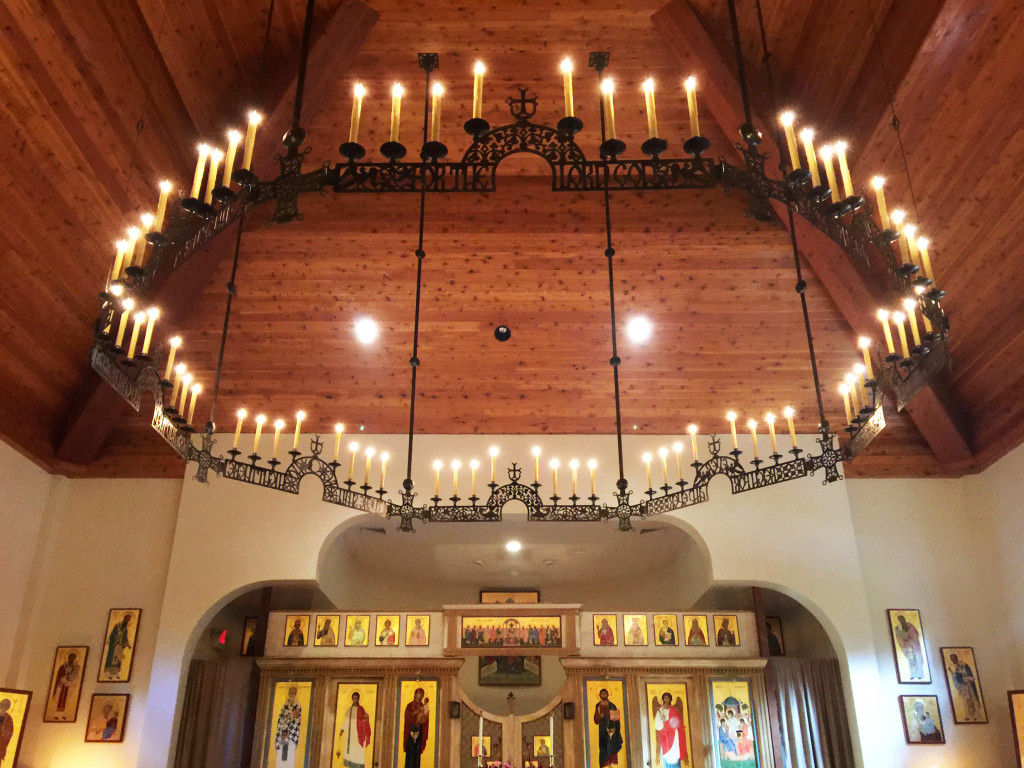
Here are some quotes that Father Luke mentioned during service about the chandelier with links to the full articles below:
“…its ring is embellished with arches, very-slightly horseshoe shaped, which lend a splendid crown-like elegance.” – Andrew Gould, “A Chorus Chandelier for a Timber Frame Church”, Orthodox Arts Journal, January 9, 2014
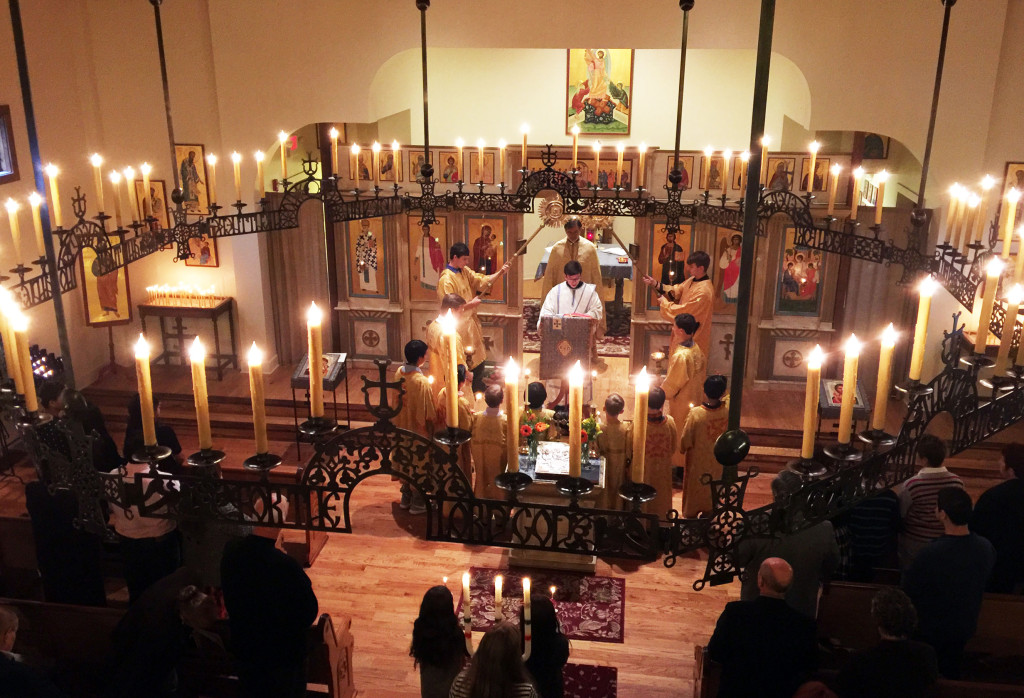
“Winding through an ever-changing progression of ornamental foliage and beasts is an inscription from Revelation 21:5 “There shall be no night there; and they need no candle, neither light of the sun; for the Lord God giveth them light: and they shall reign for ever and ever.” This use of this verse on a chandelier has precedent in ancient Romanesque art, and it is fitting to the Orthodox idea of every church as an outpost of the Kingdom of God, shining from within with the light of God’s grace.“ – Andrew Gould, “A Chorus Chandelier for a Timber Frame Church”, Orthodox Arts Journal, January 9, 2014
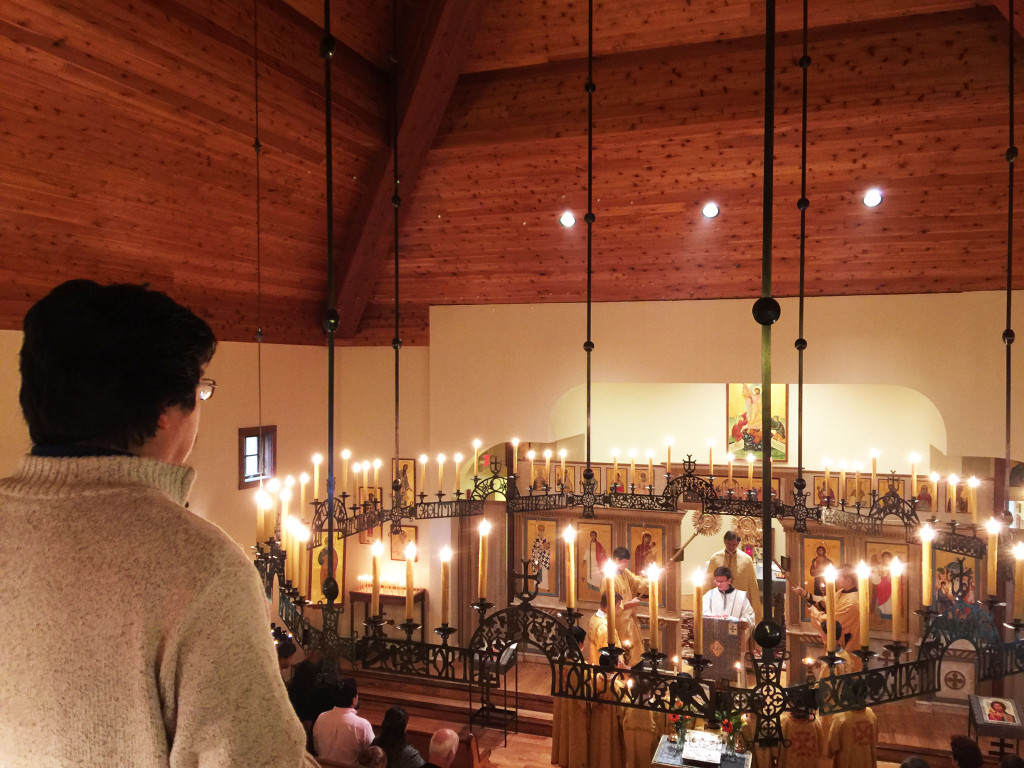
“A church interior should give a sense to incomers that this is a special place, a sacred space, not separate from but nevertheless distinct from the world outside. If the lighting inside is as intense as daylight, or is just like a well-lit work place, then we have little reminder that this is a place set side. One can think of low lighting as an evocation of the sepulchre from which the resurrection light breaks forth, or the mouth of a spring from which gushes the water of life to “bring life wherever it flows” (Ezekiel 47:9).” – Aidan Hart, “Lighting in Orthodox Churches: Liturgical Principles and Practical Ideas” Orthodox Arts Journal, August 27, 2015
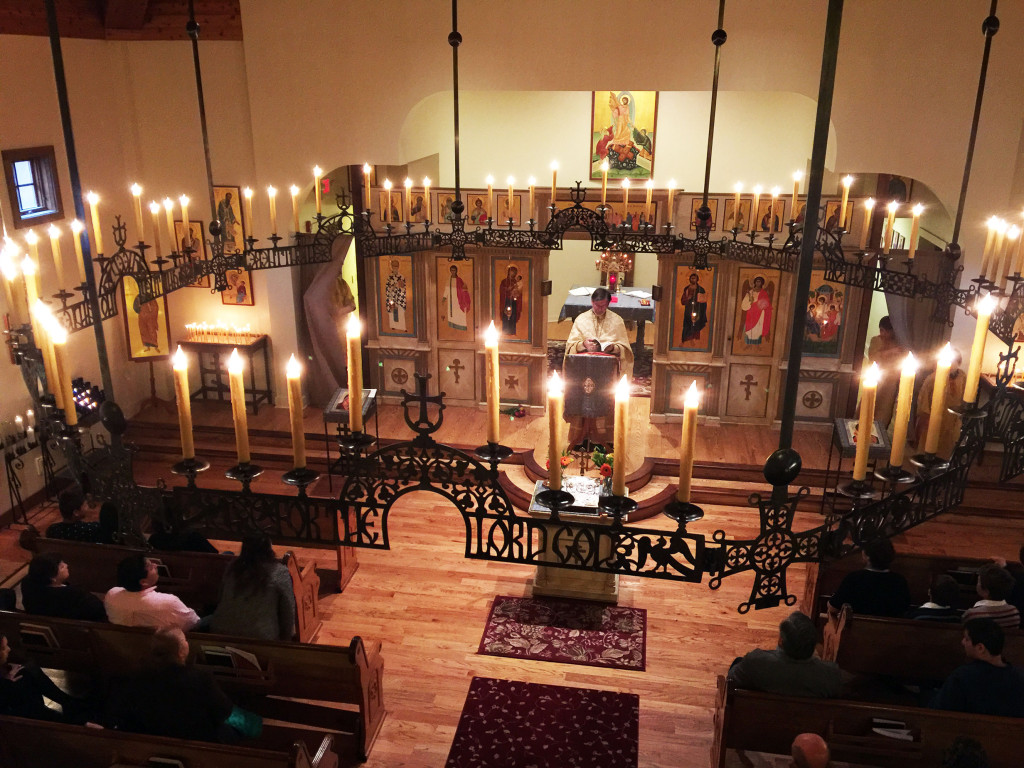
“3And there shall be no more curse: but the throne of God and of the Lamb shall be in it; and his servants shall serve him: 4And they shall see his face; and his name [shall be] in their foreheads. 5And there shall be no night there; and they need no candle, neither light of the sun; for the Lord God giveth them light: and they shall reign for ever and ever. 6And he said unto me, These sayings [are] faithful and true: and the Lord God of the holy prophets sent his angel to shew unto his servants the things which must shortly be done. 7Behold, I come quickly: blessed [is] he that keepeth the sayings of the prophecy of this book.” – Revelations 22:3-7
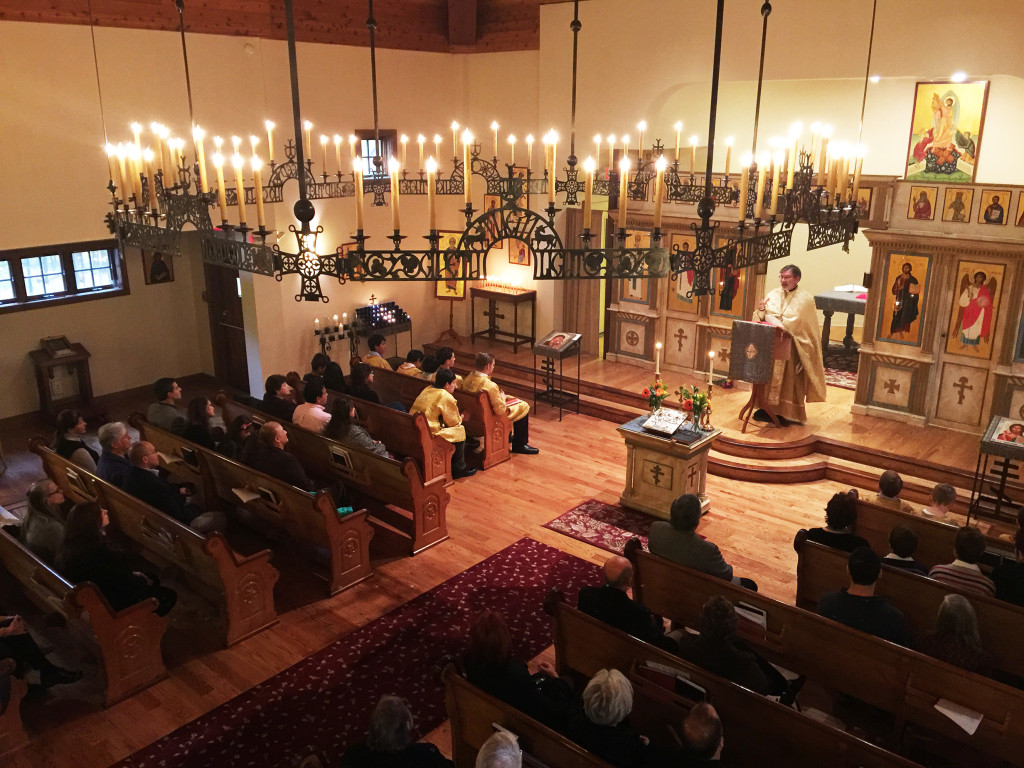
*… because in Orthodoxy the entire temple represents the New Jerusalem. The meaning of the fixture in an Orthodox temple is complex, and can best be understood by examining the word ‘choros’. In ancient Greek, it was the word for a circular clearing in the forest, a meadow. In classical mythology it is the place where lovers gather secretly for trysts, where satyrs and nymphs dance to the pan flute. Churchmen boldly adopted this word to denote the circular liturgical space under the dome, a sunlit clearing in the forest of columns. Here God and man meet for their lover’s dance, and couples hold hands and walk in circles to be married, like the pagans of old. The chandelier is called choros after the circular space that it adorns. It is the wedding crown, an ornament of pure joy to celebrate the union of God and man, like the flowers and birds that ornamented the forest clearing.” – Andrew Gould “Holy Ascension Chorus”, Orthodox Arts Journal, June 14, 2012
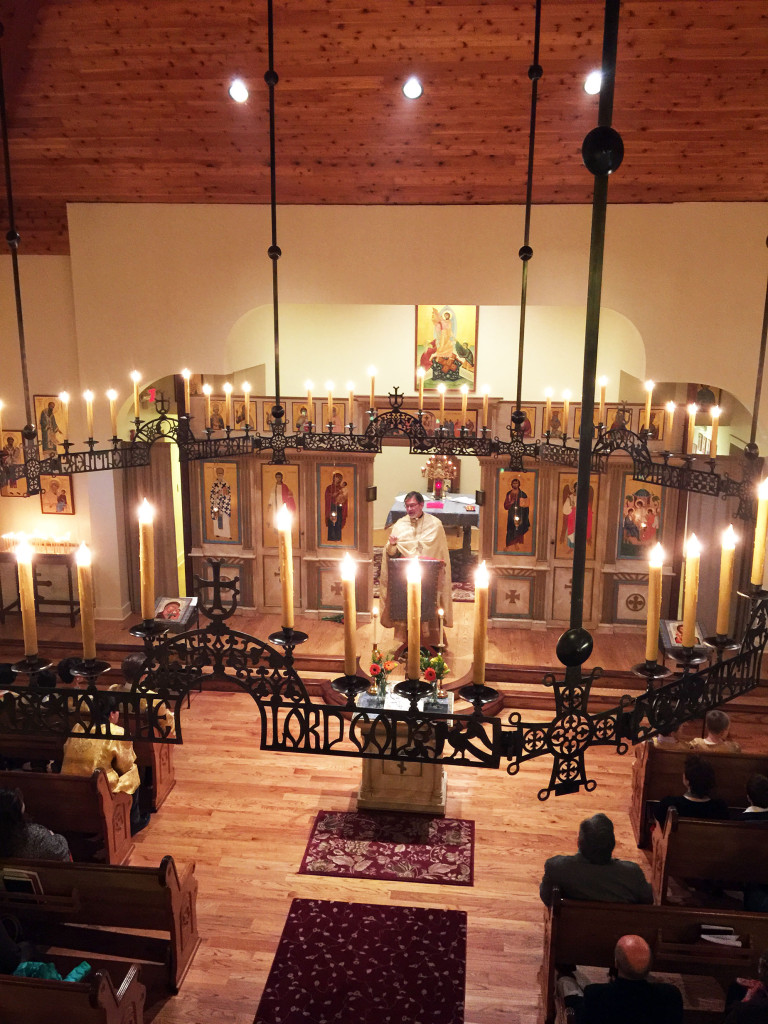
“The surviving Byzantine choroi do not include inscriptions, so for our choros we had to choose a text of our own. In consultation with the donor, we settled upon Revelation 21:5 “There shall be no night there; and they need no candle, neither light of the sun; for the Lord God giveth them light: and they shall reign for ever and ever.” This verse is similar to the inscription on the Aachen corona, however it does not describe the architecture of the city, but only the quality of light, and the eternal triumph of the blessed. It is a verse fitting to the role of the Orthodox choros—an instrument of illumination at the center of a temple which is itself the Heavenly City.” – Andrew Gould “Holy Ascension Chorus”, Orthodox Arts Journal, June 14, 2012
